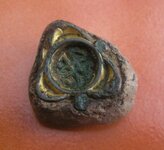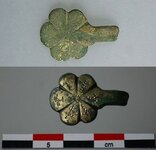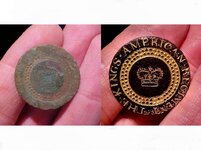Silver Searcher
Gold Member

Hello everybody
 my friend found this Viking Trade Weight
my friend found this Viking Trade Weight  it has a Guilded triqueta pendant inlaid in lead. As you can see some of the Guilding has corrosion build up, heavy in places.
it has a Guilded triqueta pendant inlaid in lead. As you can see some of the Guilding has corrosion build up, heavy in places.As this is not my find I thought I would ask for some opinions on wether it should be cleaned or left
 I know that sometimes the Guilding can be under the corrosion, but as it's a quite rare find the question remains should it be tryed or left alone
I know that sometimes the Guilding can be under the corrosion, but as it's a quite rare find the question remains should it be tryed or left alone 
SS
















